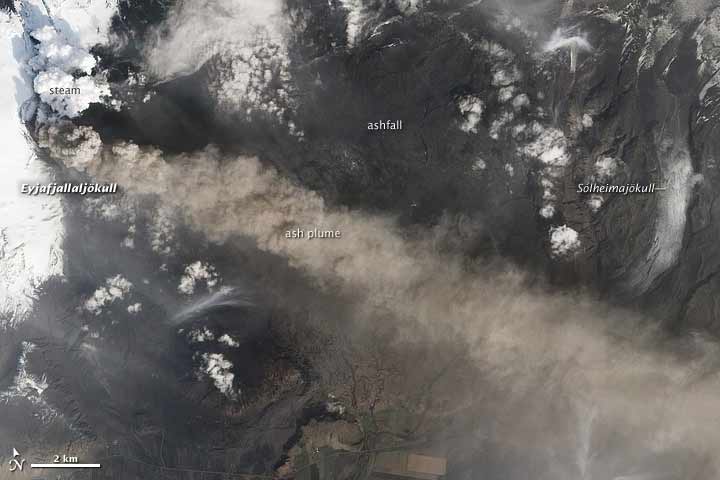Fresh Eruption of Iceland Volcano Photographed from Above


Iceland's Eyjafjallajökull volcano is at it again, erupting an ash cloud that is once again impacting air traffic.
Ash and steam continued billowing from Eyjafjallajökull and were photographed by NASA's Earth Observing-1 (EO-1) satellite on May 2.
The volcano’s summit is near the left edge of this image, and light and dark plumes hover over the volcano.
The northeastern plume is white, indicating that its principal visible component is water vapor. The southwestern plume is dull gray-brown, indicating that its principal visible component is volcanic ash.
In addition to the ash cloud near the summit, a large ash plume blows toward the east-southeast, passing over a charcoal-colored ash field on the land surface.
On May 4, the Icelandic Meteorological Office warned that Eyjafjallajökull showed no signs of ending its eruptive activity in the near future.
The Met Office reported that ash from the volcano had reached a height of 19,000 to 20,000 feet (5.8 to 6.0 kilometers) above sea level, and had spread 40 to 50 miles (65 to 80 kilometers) east-southeast of the volcano, where it impeded visibility for local residents.
Get the world’s most fascinating discoveries delivered straight to your inbox.
The Met Office also reported that lava continued flowing down a steep hill north of the crater.
- Gallery: Iceland Volcano's Fiery Sunsets
- Will the Iceland Volcano Change the Climate?
- 11 Wild Volcano Facts



